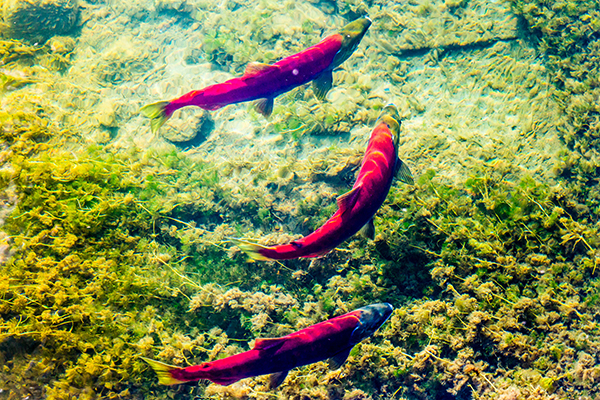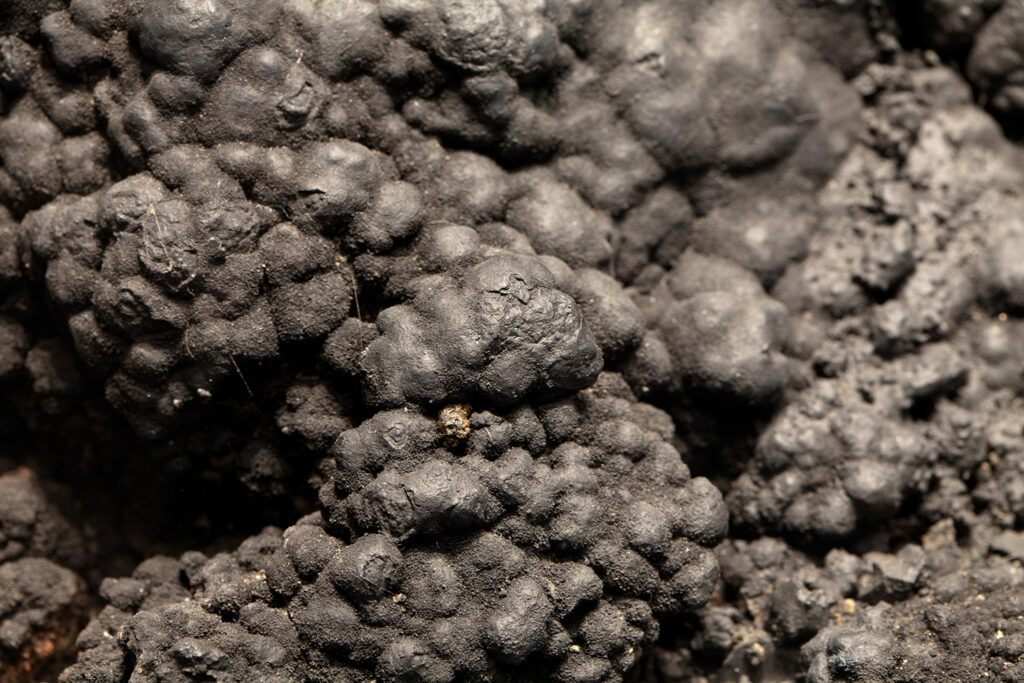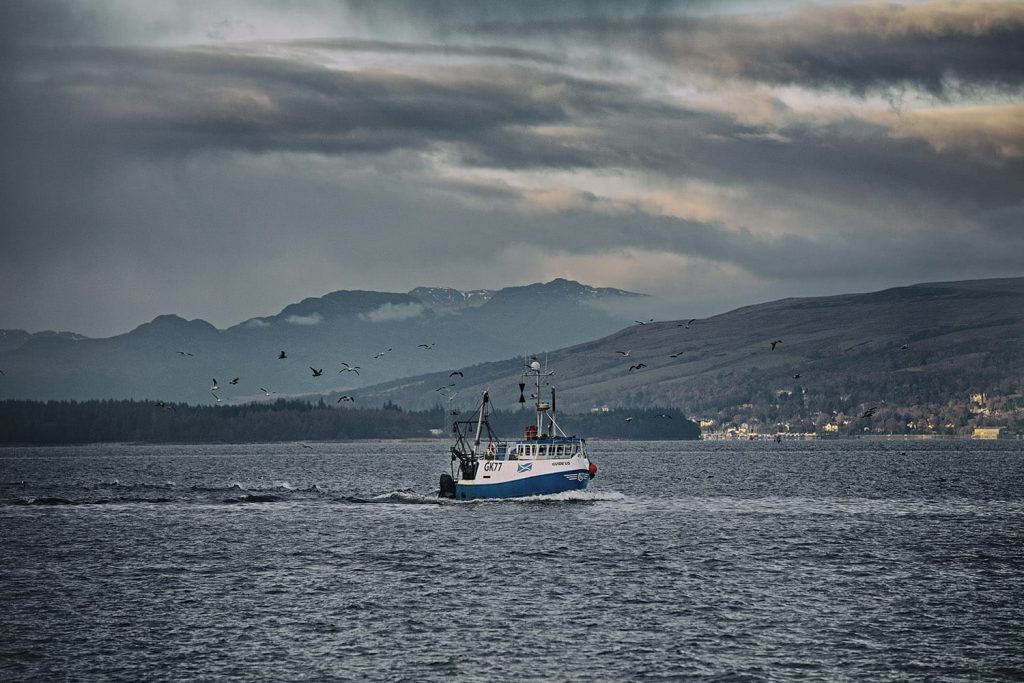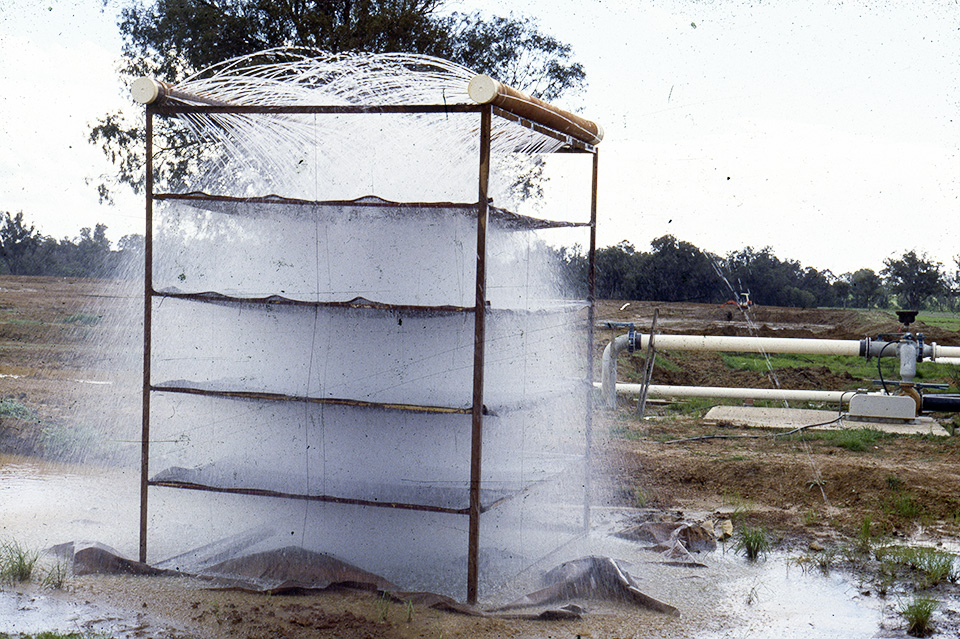‘More complete and transparent science’ needed to inform mining policy and protect salmonid-bearing watersheds, study concludes

Despite impact assessments intended to evaluate the environmental risks of mining and inform mitigation, mines continue to harm salmonid-bearing watersheds through contaminants, stream channel burial and streamflow alteration, according to a new study from the University of Alaska Fairbanks.
The study, published in Science Advances, synthesizes the impact of metal and coal mines on salmon and trout in northwestern North America, and highlights the need for “more complete and transparent science to inform mining policy.” It is the first comprehensive effort by an interdisciplinary group of experts that explicitly links mining policy to the current understanding of watershed ecology and salmonid biology.
“Our paper is not for or against mining, but it does describe current environmental challenges and gaps in the application of science to mining governance,” said Chris Sergeant, lead author and a graduate student at the University of Alaska Fairbanks College of Fisheries and Ocean Sciences (UFOS) and a research scientist at the University of Montana. “We believe it will provide critically needed scientific clarity for this controversial topic.”
For the study, experts integrated and reviewed information on hydrology, river ecology, aquatic toxicology, biology and mining policy. Their robust assessment maps more than 3,600 mines throughout Montana, Washington, British Columbia, the Yukon and Alaska. The size of the mines ranges from family-run placer sites to massive open-pit projects.
The study’s findings indicate that silt suffocates eggs and embryos may not survive contaminated groundwater. Heavy metals compromise a salmon’s sense of smell, which affects their ability to react to predators and find their way back from the ocean to spawn.
“Not all mines pose the same level of risk, but our review revealed that harm from mining can be severe and long-lasting,” said Sergeant. “The extent of mining pressures on these watersheds underscores the importance of accurately assessing risk to water, fish and communities.”
The paper also describes how some mining policies do not account for the breadth and length of mining impacts on the environment or the increasing effects of climate change.
“The crux of the issue is that salmon use so much of the watershed during their life cycle,” said Megan McPhee, salmon biologist and CFOS faculty member. “They move throughout watersheds, whereas the impact assessments of mining projects tend to be very locally focused, and they don’t sufficiently consider all of the compounding and downstream effects of mining.”
McPhee said that some impact assessments don’t fully assess the infrastructure required to operate a mine, such as roads, electricity generation and water removal.
“Most mines, after closure, have to be mitigated in perpetuity,” said McPhee. “That’s a problem because most corporations aren’t structured that way. Also, most mitigation strategies don’t take into account environmental change, including permafrost melting, and climate change-induced flooding.”
The researchers highlighted four key issues that will be “foundational” to modern, science-based risk assessment and mitigation, starting with understanding stressor complexity and uncertainty. Stressors include impacts such as altered hydrology and temperature, habitat modification and loss and pollutants.
Other key issues are accounting for the cumulative effects of mining activities across a mine’s life cycle, developing realistic mitigation strategies and recognizing the potential for climate change to magnify risk.
Follow the Advocate on Twitter @GSA_Advocate
Now that you've reached the end of the article ...
… please consider supporting GSA’s mission to advance responsible seafood practices through education, advocacy and third-party assurances. The Advocate aims to document the evolution of responsible seafood practices and share the expansive knowledge of our vast network of contributors.
By becoming a Global Seafood Alliance member, you’re ensuring that all of the pre-competitive work we do through member benefits, resources and events can continue. Individual membership costs just $50 a year.
Not a GSA member? Join us.
Author
Related Posts

Fisheries
Ocean mining’s energy potential could put global fisheries at risk
Interest in ocean mining is growing, but hundreds of scientists warn that impacts may devastate existing marine industries, including fisheries.

Fisheries
Bottom trawling linked to high greenhouse gas emissions in MPA-supporting study
A study touts marine protected areas and bottom trawling bans, but its methods and conclusions are questioned by fellow researchers and fishers.

Responsibility
Assessing groundwater quality in aquaculture
Those interested in using groundwater for aquaculture should perform a thorough chemical analysis of the water. Several problems related to groundwater use in hatcheries and holding or transport vessels can be alleviated by degassing or aeration.

Responsibility
Trace metals toxic at high concentrations
Excessive concentrations of trace metals, especially copper, are toxic to phytoplankton and other aquatic plants. The ionic forms of trace metals are toxic to fish and other aquatic animals, but soluble, chelated trace metals are relatively non-toxic.



